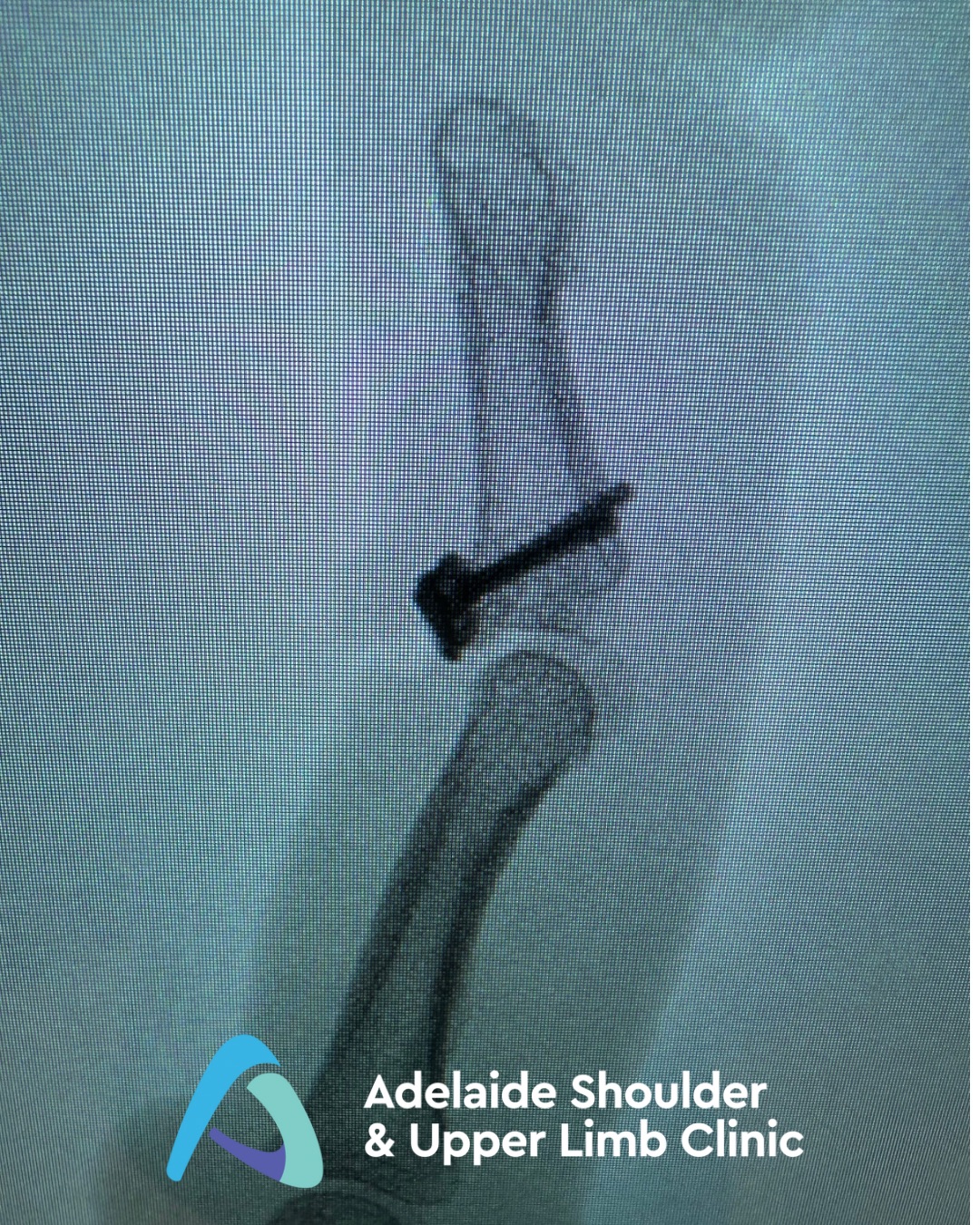Hand Fractures
Causes, Symptoms, Types, Treatment Options, and Rehabilitation
Causes and symptoms
Hand fractures are common injuries that can occur due to various causes, including:
- Direct trauma from falls, sports injuries, or accidents.
- Crushing injuries from heavy objects or machinery.
- Twisting injuries during sports or physical activities.
Symptoms of hand fractures may include:
- Pain: Intense pain at the site of the fracture, worsened by movement or pressure.
- Swelling and bruising: Swelling and bruising around the injured area due to soft tissue damage.
- Deformity: Visible misalignment or deformity of the affected finger or hand.
- Limited range of motion: Difficulty moving the finger or hand due to pain and instability caused by the fracture.

Types of hand fractures
Hand fractures can vary in location and severity
- Metacarpal fractures: Breaks in the bones of the palm; often involve the ring and little finger.
- Phalangeal fractures: Breaks in the small bones of the fingers or thumb.
- Intra-articular fractures: Breaks that extend into the joint surface.
- Comminuted fractures: Fractures where the bone is broken into multiple pieces.
- Open fractures: Where the broken bone pierces the skin, increasing infection risk.
Timely and appropriate treatment helps ensure proper healing and prevents permanent loss of hand mobility or strength.
Cause of hand fractures
Hand fractures can vary in location and severity
Hand fractures can result from:
-
Sports injuries (especially contact sports)
-
Falls onto an outstretched hand
-
Crush injuries at work or home
-
Direct impact (such as punching an object)
-
Motor vehicle accidents
These injuries may also be associated with ligament damage, dislocations, or tendon injuries.

Treatment options
The treatment approach for hand fractures depends on the type, location, and severity of the fracture:
Non-surgical treatment: Many hand fractures can be treated without surgery, particularly if the bone fragments are well aligned. Non-operative treatment may involve:
-
Splinting or casting to immobilise the fracture
-
Buddy taping for minor finger fractures
-
Pain management with anti-inflammatory medication
-
Close monitoring through follow-up X-rays
Dr Brumby-Rendell will recommend the most appropriate option based on the fracture type and your personal needs.
Surgical treatment: Surgery may be required for unstable, displaced, or complex fractures, especially when alignment cannot be maintained non-operatively. Dr Brumby-Rendell performs minimally invasive procedures to stabilise the fracture and promote healing, which may include:.
- Open reduction and internal fixation (ORIF) using screws, plates, or wires
-
K-wire fixation for small or unstable finger fractures
-
Fracture-specific implants for optimal anatomical restoration
Surgical intervention aims to preserve finger motion, hand strength, and functional use.
Frequently Asked Questions
Even with proper treatment, hand fractures can lead to issues such as stiffness, malunion (bones healing out of alignment), nonunion (bones not healing together), arthritis (especially if the joint surface is involved), and possible nerve or tendon damage.
Preventive measures include early and accurate diagnosis, proper alignment during treatment, careful immobilization, early initiation of movement when safe, and consistent participation in hand therapy.
Recovery and Rehabilitation
Recovery time depends on the severity and type of fracture. Most patients can expect:
-
Immobilisation for 3–6 weeks (depending on treatment)
-
Early hand therapy to prevent stiffness and restore motion
-
Return to light duties within a few weeks
-
Full recovery in 2–3 months, though complex cases may take longer
Dr Brumby-Rendell works with Adelaide-based hand therapists to guide you through a structured rehabilitation program.
Hand Fractures with Dr Oscar Brumby-Rendell
Dr Brumby-Rendell is a trusted orthopaedic hand and wrist specialist with extensive training in treating complex hand injuries. He combines precise surgical technique with patient-focused care to ensure optimal outcomes.
Patients benefit from:
-
Accurate diagnosis and personalised treatment
-
Minimally invasive surgical techniques
-
Collaborative rehabilitation with certified hand therapists
-
Comprehensive post-operative care

Ready to learn more?
Learn more about Hand Fractures and other Hand-related injuries with the help of Dr Oscar Brumby-Rendell in our videos here.
Read more articles about hand-related injuries below:
Once you have a referral…
Book your consultation here.
